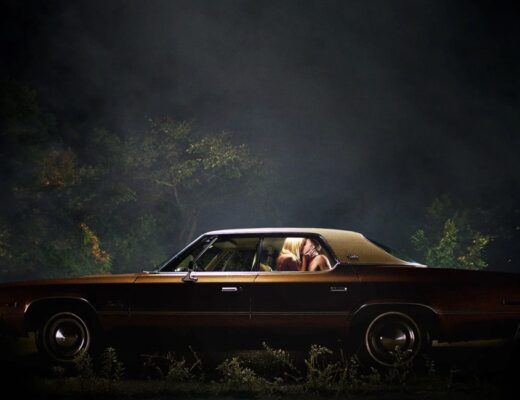Inconvenient Indian succeeds where so many other documentaries fail — namely, in justifying its existence as a visual text. At first, Michelle Latimer’s documentary exhibits the character of a thesis film, and in fact opens with a bit of introductory, hyper-literate voice-over from Thomas King, author of the nonfiction work on which it is based. “The truth about stories is that’s all we are,” King intones in the first few minutes, before continuing: “Most of us think that history is the past. It’s not. History is the story we tell about the past.” But rather than allow these joint sentiments to guide her film into any sort of tidy commentary, Latimer channels the art of King’s particular phrasing to craft something more poetry than dissertation. That’s not to say the film doesn’t follow a core idea — it does; specifically, the idea that Native identity has been diffused to the point of ephemerality by a Western culture intent on controlling the future through (fictional) historical reconstruction. (King later observes: “The problem was, and continues to be, the unexamined confidence in Western Civilization. And unwarranted certainty in Christianity. And arrogance.”)
But these excerpts of thematic contextualization are limited, and Latimer instead builds her film around beautiful images loaded with anachronism and tragic irony. Inconvenient Indian opens with alternating POV and low-angle shots of a Native man, garbed in traditional war bonnet and in full body paint, dismounting his horse and cresting a hill of wild goldenrod on foot, as the sleek skyline of modern-day Toronto takes shape between the reedy tendrils. It’s an obvious but no less beautiful prologue for a film specifically concerned with the space granted to Native peoples within modern culture. Another early scene (one later recalled several times) captures the image of a movie theater full of First Nations spectators (including King, front and center); the camera flits between the auditorium’s many faces which are in turn watching the projected images of Native portrayal throughout film history. It’s both an indictment of and corrective to Hollywood’s transgressive stereotypes, acknowledging the power of Native representation on screen and seeking to capture, with honesty and complexity, what that presentation can and should look like in the modern world.
But much in the way that King’s emphatic narration gives way to the film’s visual charms, these aggressive juxtapositions also cede space to more restrained representation of modern Native culture: Latimer allows Inconvenient Indian’s roving, mostly handheld camera to investigate topics such as modern movements aimed at reclaiming traditional culture, diverse and technology-driven efforts at contemporary Indigenous art, and the State-backed attempts (replete with militarized police forces) to control and undermine Native land rights. What at first feel like structural digressions reveal themselves to be gently layered thematic progressions; in Latimer’s hands, deft portraiture builds to a vision of profound collective power. There’s an extended, nearly ten-minute sequence partway through Inconvenient Indian which details an artist’s Indigicentric exhibition, and the camera snakes through the gallery space, lighting upon various depictions and presentations and styles, all tethered by their thematic concerns. It’s a perfect encapsulation of the film itself, which likewise artfully glides between disparate but united canvases, building a measured, painful argument against the cultural obliteration of First Nations peoples. The result is an expressionistic work of immense visual and emotional beauty.
Published as part of TIFF 2020 — Dispatch 5.







